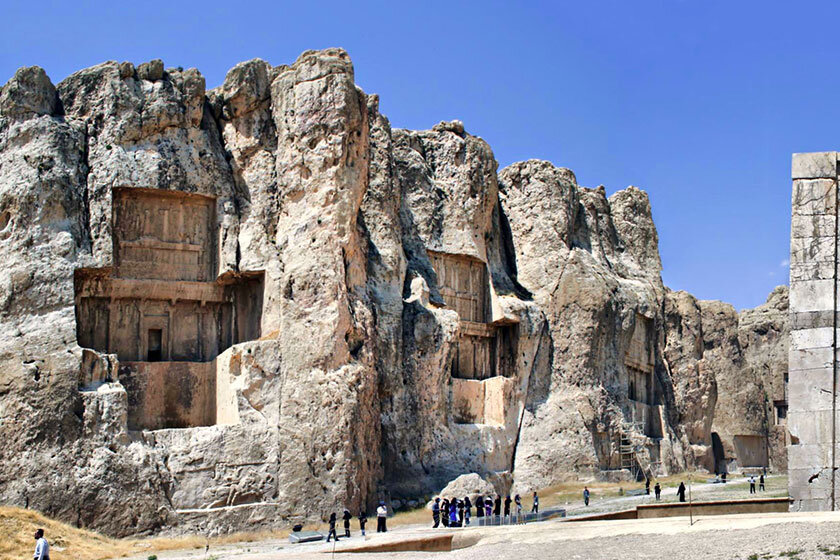Sassanid-era bas-relief discovered in southern Iran

TEHRAN – A historical bas-relief carving, which is estimated to date from the Sassanid era, has recently been found in the vicinity of Naqsh-e Rostam, a royal rock-hewn necropolis in Fars province, southern Iran.
A bas-relief that bears the Pahlavi-Sassanid script, has been discovered among a large number of other ones, which are located on top of Hossein mount, ILNA quoted Hamid Fadaei, a provincial cultural heritage official, as saying on Monday.
The experts are currently reading (or deciphering codes of) the relief that dates back to the times of Sassanids (224 CE–651) the official noted.
Naqsh-e Rostam, meaning “Picture of Rostam”, incorporates memorials of the Elamites, the Achaemenids and the Sassanians. It is where four Persian Achaemenid kings are laid to rest, those of Darius II, Artaxerxes I, Darius I and Xerxes I (from left to right facing the cliff), although some historians are still debating this.
There are gorgeous bas-relief carvings above the tomb chambers that are similar to those in Persepolis, with the kings standing on thrones supported by figures representing the subject nations below. Beneath the funerary chambers are dotted with seven Sassanian era (224–651) bas-reliefs cut into the cliff depict vivid scenes of imperial conquests and royal ceremonies; signboards below each relief give a detailed description in English.
AFM/MG

Leave a Comment